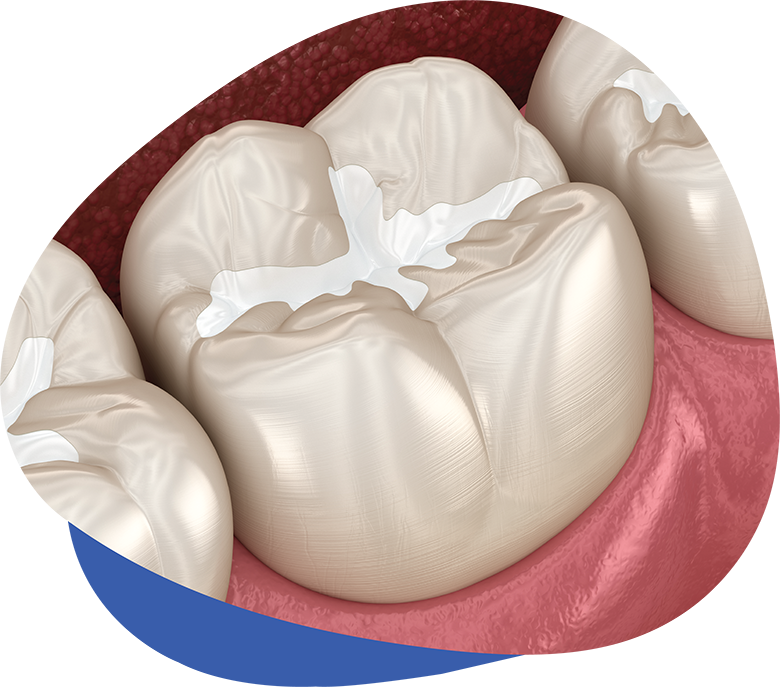Sealants & Fluoride

Sealants
Sealants are a thin protective coating painted on the teeth to help prevent cavities. This simple and painless procedure is shown to have huge benefits, particularly for children. Adults can benefit from sealants as well.
Research from the Centers for Disease Control and Prevention (CDC) shows that dental sealants prevent 80% of cavities for two years after application. They also continue to protect against 50% of cavities for up to four years.
When is the best time for my child to get sealants?
The best time for a child to get sealants is when they are getting their adult molars and premolars, generally around ages 6 and 12.
Do babies/toddlers need sealants?
Treating younger teeth with sealants is normally only for children with an increased risk of tooth decay.
Does insurance cover the costs of sealants?
Many dental insurance plans cover the cost of sealants for children only. Check with your plan.
Do sealants make teeth feel different?
Teeth might have a slightly different texture just after the sealant is applied. After that, most patients report their teeth feel the same as before treatment.
How long do sealants last?
Sealants can last up to 10 years. Our team will check the sealants each time your child comes in for a recare appointment.
Fluoride
Fluoride is particularly important to your teeth because it is a naturally occurring mineral that combats plaque and decay. Fluoride treatments are especially important for children's mouths with developing teeth.
Westerville Dental Associates regularly prioritize fluoride treatments for children six years old and younger. We can also evaluate fluoride needs for adults.
Our professional-grade fluoride treatments can be used at home for ultimate protection. These treatments are available by prescription and should be used under our supervision only because excessive fluoride can be a problem too.
Known as fluorosis, this condition is usually evident by age six and is most typically found in areas utilizing well water. Advanced cases of fluorosis are marked by streaks and discoloration that are noticeably visible on your teeth, ranging in color from white to brown. These noticeable stains are severe and require removal by a professional.




